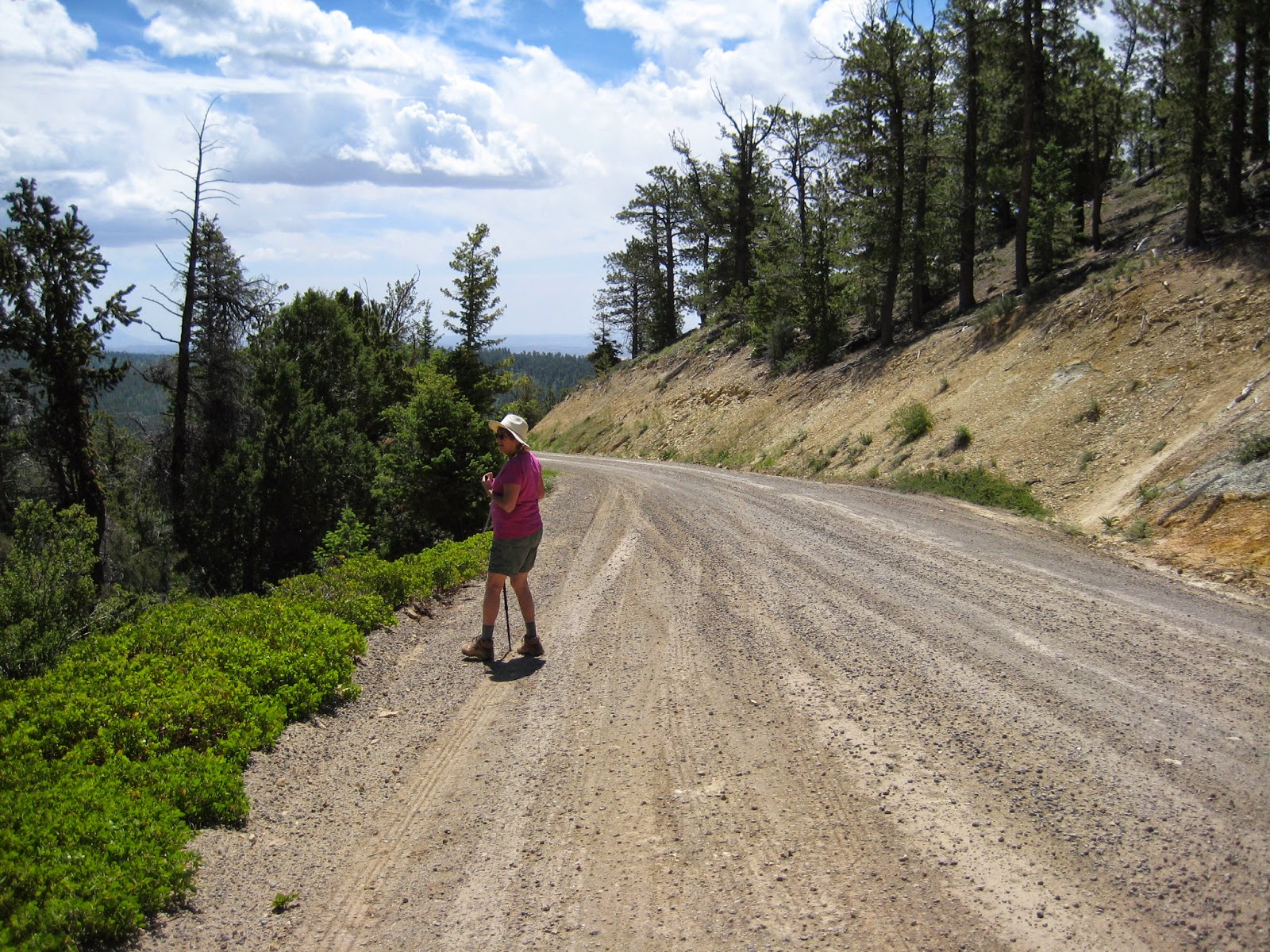
On Sunday, June 8, the morning skies were dark as we left Moab and traveled into Canyonlands National Park. We came upon the indescribable.
Canyonlands National Park is in an area of the country riddled with thousands of canyons, mesas, hoodoos, bluffs, cliffs, spires, chimneys, and all forms of rock formations. What it has few of is roads leading into the area. Paved roads you can count on one half of one hand. The park itself spreads over 527 square miles, and was the last area in the continental United States to be mapped. The entire southern half of the park is called the Maze, and for good reason. The gnarled mess of canyons is so vast, that it became an area of hideouts for bandits into the 20th century. The Colorado and Green rivers meet within the park, to continue south as the mighty Colorado.
As the skies began to clear, we took the paved road that enters from the northern end of the park. It goes part way south along a string of mesa tops, so mostly what we saw was from overlooks. The scale of the landscape is, well, really indescribable. Indeed it is so grand, that it is mind boggling, at least for me. We were able at one overlook to see the Green River way down below, before it meets up with the Colorado. There are a few dirt roads that drop into some of the canyons, and enter from several sides of the park. One is 100 miles long, and requires a two day trip with high clearance and four wheel drive.
We did a little geocaching in the morning coming up to the park, but very little. Geocaches are not allowed in National Parks, so we were out of the environment. In the park, we mostly we just gawked at one stupendous overlook, then another, and another, until we both were on overload. Then we headed back to Moab to buy some supplies, and get ready for our move in the morning toward Capitol Reef National Park, and Torrey, Utah. Here are a few shots from today, but I can tell you up front, most of what we saw was bigger than my little camera could take in.
(look for the SUV in the first photo below)
Cryptobiotic Soil
Okay... here is your science lesson for toady. Read only if you are interested. :-)
Cryptobiotic soil makes bushwhacking difficult in this area. You have to be very, very careful where you step. By the way, this living soil is also found in the Sedona area. When I worked in Sedona, damage to this life form by unknowing urban folks was a constant problem. If you ever wondered why the Sedona area has so many trails, this stuff is the reason.
Here is a picture that I took yesterday in Castle Rock Valley of cryptobiotic soil. Zoom in the picture for a closer look.
Cryptobiotic soil crust is a living groundcover that forms the foundation of high desert plant life. This knobby, black crust is dominated by cyanobacteria, but also includes lichens, mosses, green algae, microfungi and bacteria.
Cyanobacteria, previously called blue-green algae, are one of the oldest known life forms. It is thought that these organisms were among the first land colonizers of the earth's early land masses, and played an integral role in the formation and stabilization of the earth's early soils. Extremely thick mats of these organisms converted the earth's original carbon dioxide-rich atmosphere into one rich in oxygen and capable of sustaining life.
When wet, Cyanobacteria move through the soil and bind rock or soil particles, forming an intricate web of fibers. In this way, loose soil particles are joined together, and an otherwise unstable surface becomes very resistant to both wind and water erosion. The soil-binding action is not dependent on the presence of living filaments. Layers of abandoned sheaths, built up over long periods of time, can still be found clinging tenaciously to soil particles, providing cohesion and stability in sandy soils at depths up to 10cm.
Nitrogen fixation is another significant capability of cyanobacteria. Vascular plants are unable to utilize nitrogen as it occurs in the atmosphere. Cyanobacteria are able to convert atmospheric nitrogen to a form plants can use. This is especially important in desert ecosystems, where nitrogen levels are low and often limiting to plant productivity.
Soil crusts have other functions as well, including an ability to intercept and store water, nutrients and organic matter that might otherwise be unavailable to plants.
Unfortunately, many human activities negatively affect the presence and health of soil crusts. Compressional stresses placed on them by footprints or machinery are extremely harmful, especially when the crusts are dry and brittle. Tracks in continuous strips, such as those produced by vehicles or bicycles, create areas that are highly vulnerable to wind and water erosion. Rainfall carries away loose material, often creating channels along these tracks, especially on slopes.
Impacted areas may never fully recover. Under the best circumstances, a thin veneer of cryptobiotic soil may return in five to seven years. Damage done to the sheath material, and the accompanying loss of soil nutrients, is repaired slowly during up to 50 years of cyanobacterial growth. Lichens and mosses may take even longer to recover.




































.jpg)


















